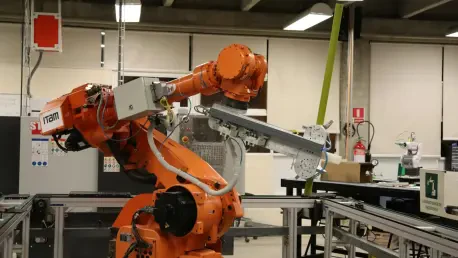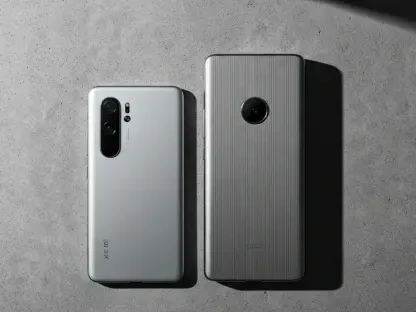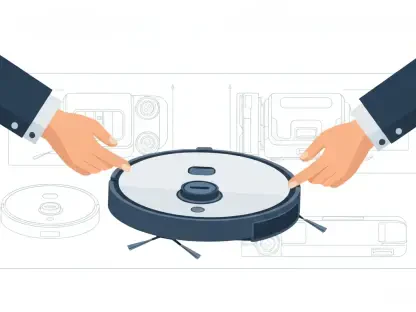In the rapidly advancing field of industrial robotics, efficiency and precision have become key determinants of success. As industries seek to maximize productivity, traditional methods of dynamic modeling often present significant barriers due to inefficiencies. Many rely on linear-in-parameter (LIP) dynamic models for processes such as torque calculation and parameter identification. However, such models are plagued with redundancies in multivariate polynomials (MVPs), making real-time application challenging and slowing computation speeds. Recent developments by researchers at the Ningbo Institute of Materials Technology and Engineering (NIMTE) have introduced a promising solution to this challenge: the linear-in-multivariate-polynomials (LI-MVP) dynamic model framework. By innovatively revising the way dynamic data is processed and modeled, this approach stands to transform how industrial robots operate, potentially setting a new standard for efficiency and adaptability.
Enhancing Efficiency through Novel Dynamics Modeling
The LI-MVP framework innovatively captures dynamic interactions by encoding coefficients and polynomial degrees into a numerical matrix, thus streamlining dynamic modeling processes. A noteworthy aspect of this model is its replacement of the cumbersome symbolic Kronecker product with a more sophisticated binary operation performed within a monoid. This methodological enhancement significantly accelerates the derivation of the model in encoded space. By doing so, the process notably enhances real-time torque computation, which is crucial for adaptive control in industrial robots. This innovation allows the model to eliminate redundant MVPs and unnecessary parameters concurrently, simplifying the computing process and increasing efficiency. Once the operations are performed, the model employs decoded MVPs in Horner form to regenerate the final symbolic LIP model. This approach drastically reduces the number of multiplications necessary for calculating torque, further contributing to the model’s speed and precision.
Bridging Computational Bottlenecks and Real-Time Applications
One of the major accomplishments of the LI-MVP framework lies in its ability to address long-standing computational bottlenecks, which have traditionally hampered the real-time application of dynamic models. Quantitative analyses indicate that the LI-MVP method outstrips existing approaches in terms of efficiency during model derivation. Such efficiency paves the way for more responsive and agile real-time control of industrial robots. With the capability to streamline complex calculations, this model enhances the agility and responsiveness of robotic systems, enabling them to adapt more effectively to their environments. As a result, robotics technologies can move toward a harmonious integration with their working contexts, providing more sophisticated interaction with environmental variables. This research sets a precedent for further developments in robotics that prioritize efficiency and adaptability, underscoring a trend toward more dynamic and responsive technological applications.
Implications for the Future of Robotics
The implications of adopting the LI-MVP model framework extend far beyond mere efficiency improvements. This innovation holds the potential to revolutionize how robots interact with the physical world by facilitating a deeper integration of adaptive capabilities. By simplifying the derivation process and enhancing real-time computations, the LI-MVP model framework provides a foundation for future advancements in industrial robotics. It is not only a technological leap but also a strategic enhancement that will likely impact a wide range of sectors reliant on robotics, from manufacturing to logistics and beyond. As these sectors recognize the benefits of improved efficiency and adaptability, the transition to employing LI-MVP models could become a defining trend in industrial robotics. Ultimately, this development promises to catalyze advancements, making robotics a more integral and efficient aspect of industrial operations, transforming production landscapes and setting new industry standards.
Engaging with Future Possibilities in Robotics
In light of these developments, the LI-MVP dynamic model framework emerges as a pivotal advancement, striving to redefine the landscape of industrial robotics. This approach not only breaks through computational barriers but also opens pathways for more sophisticated interaction and adaptability in robotic systems. As industries across various sectors seek to employ more efficient and responsive automation solutions, the potential for LI-MVP models to reshape industrial practices becomes increasingly evident. Looking ahead, the possibility for further innovation is vast, offering numerous avenues for increased efficiency, adaptability, and integration within industrial ecosystems. This is a turning point, suggesting a future where robotics plays an even more central role in transforming industrial operations for greater productivity and efficiency.









